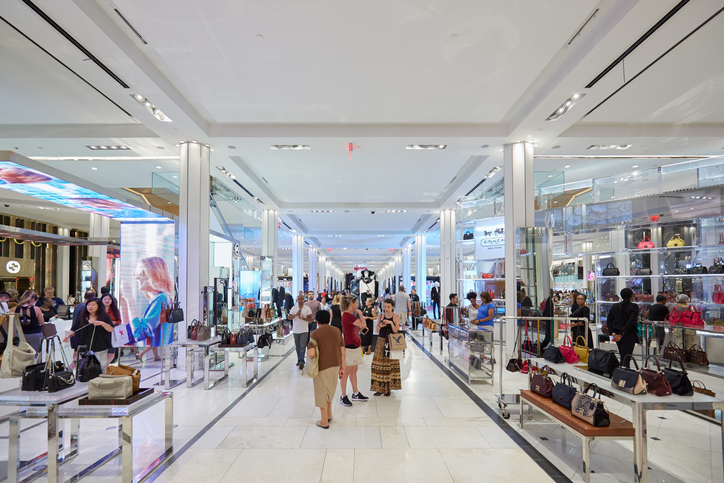Location-based analytics is key to helping brick-and-mortar retailers boost foot traffic, writes Radinck Van Vollenhoven.
The online functions of retailers have increased drastically as more and more consumers are choosing to browse and shop through digital platforms instead of physically going in-store. There is certainly an undeniable convenience with this method of shopping and traditional experiences are being perceived as troublesome, time-consuming and a waste of effort in response to these resources. There is a clear need for new strategies to encourage physical customer engagement with retailers in response to the growing shift to online.
Brick-and-mortar retailers must innovate their marketing strategy to encourage foot traffic, and utilising location-based analytics is key to achieving this, by bridging shoppers’ online and offline experiences. Online retailers have proven overwhelmingly favourable as consumers are recognising the benefits of the online shopping experience, including the ease of comparison between deals, greater variety, lack of timeliness and above all, unparalleled convenience.
The convenience of the pre-purchase stage is a major factor that is responsible for the growing shift to online shopping. According to a recent Nielsen study, 53 per cent of consumers opt to compare prices of similar items before buying and 44 per cent search for coupons and deals. Shoppers want best value with ease. With the integration of built-in location intelligence in mobile apps, users can be notified of personalised offers from their favourite retailers in real time as they move and is thus a viable solution to a seamless integration of the online and offline experience.
Apps like Stocard are utilising these omnichannel retail experiences to revolutionise retail advertising with location-enriched data. Consumers are notified of their preferred retailer in the immediate vicinity based on their shopping preferences and location, offering a personalised shopping experience through their smartphone. Location-based intelligence delivers great insights into consumer purchase behaviour and subsequently boost store visits, foot traffic and basket size. An optimised value exchange is put in place to support the existing relationship between the customer and retailer.
Data collected from these interactions is extremely valuable for businesses as well. Retailers are able to determine which actions are high-achieving or under-performing, establishing metrics to identify key actions that drive in-store sales. An enhanced customer experience is delivered through users’ mobile devices by understanding how their customers respond to certain information. A Google study showed that shoppers who frequently engage with their devices while browsing are likely to spend 25 per cent more in-store than those who occasionally use their phones, making it worthwhile for businesses to invest in marketing strategies via mobile devices.
As location-driven data is integrated into retailers’ marketing strategies, there is a strong focus on creating new in-store experiences for customers. Strategies of added value and convenience will continue to shape consumer shopping experiences.
Here are four tips on how to boost foot traffic in-store in response to online competition:
1. Invest in data and loyalty programs
Consumer retention and loyalty are effective strategies for maintaining and boosting sustainable sales. It creates a steady flow of revenue and releases the pressure from the continuous need to acquire customers. If you treat your customers well, they will bring friends and family to visit your store.
Loyalty programs are also effective in reaching customers who are more partial to your offering through communication channels such as email. Look to also integrate location-based analytics into your loyalty program via third party apps to offer exclusive deals to nearby, existing customers. This can generate valuable data for your company to understand effective consumer insights and how to conduct the best engagement strategies.
2. Offer click-and-collect
Online shopping has established itself as a preferred method of buying for many, however there are some issues that may arise for customers with this strategy: purchased apparel may not fit and customers will need to make a trip to the physical store if return policy permits, or the customer may not be home for the delivery, prompting a visit to the post office. The click-and-collect option is a solution to these problems – enabling customers to pick up in-store allows them to browse further and increase basket size.
3. Create compelling in-store experiences
Give people a reason to visit your stores and create an engaging and compelling experience. An effective recent example of this is General Pants Co. having a basketball court and vintage arcade in their new Parramatta store – when they opened the store, they saw huge amounts of customers lining up to play basketball, arcade games and of course shop.
4. Boost mobile responsiveness:
A study by Google has found that 50 per cent of consumers who conduct online research of local stores will visit it within a day. Therefore, it is imperative to not neglect your mobile store when boosting in-store sales. Invest in user experience design, ensuring it is mobile-friendly, to attract customers and site visits and allow consumers to browse through your products with ease. This will encourage viewers to return by creating a positive consumer-focused impression of your business.
Radinck van Vollenhoven is the Country Manager for Stocard in Australia and New Zealand

